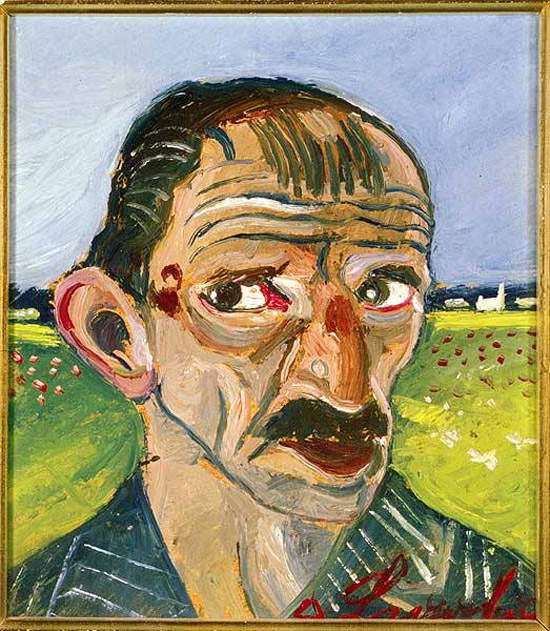When we are confronted with awork of art, we very often (indeed, almost always) wonder what the personality, the human condition, the thinking of the hand that guided the brush or chisel to create it were. For a work of art is always an expression not only of a precise historical and artistic context but also of the mind of its creator. Art history also has this among its tasks: to understand the works in order to understand the personality of the artists, and vice versa. Therefore, it is clear that having the opportunity to cross the threshold, even for a few minutes, of an artist’spersonal universe, while not claiming to draw conclusions about him or her, is aunique experience that allows us to get more in tune with his or her art, to try to explain why certain stylistic or iconographic choices are made, in short, to understand his or her works more deeply.
This is why we want to present to you what we consider an extraordinary document on one of the most controversial painters of the 20th century, Antonio Ligabue (1899 - 1965). It is a film, shot by director Raffaele Andreassi, who had a great interest in the art of the Swiss-Reggian painter, lasting just under fifteen minutes. It was filmed in 1962, three years before Antonio Ligabue’s death, but it was not broadcast on television until 1977: the same year in which RAI offered the public the splendid screenplay Ligabue, with the painter masterfully played by a grandiose Flavio Bucci (and we recommend viewing it, perhaps after seeing the documentary). Recently, the Rai Storia channel has repurposed the 1962 document in its programming, and it can also be found in its entirety on YouTube. It is titled The True Naïf, in reference to the type of painter that Antonio Ligabue fully embodied.
We get from it a portrait of a suffering man, in need and longing for human warmth, a “desperate, lonely, loveless creature, searching for love with breathlessness,” to use the words of the film’s narration. An artist whose intimacy, strongly contrasted with outward manifestations, could only find a way out on canvases and in sculptures. A man whose personality nevertheless remains barely penetrable, and certainly difficult to judge, especially if the judgment is vitiated by the patterns imposed by society. But Il vero naïf contributes to giving us a closer, and perhaps even more poetic and touching, idea of the man Ligabue, since he is presented to us as he was, without filters of any kind: there is only a camera accompanying him in his daily activities, documenting some phases of one of his days, among the mists of the Bassa Reggiana, where Ligabue led most of his existence. A film that fully respects both the man and the artist. We therefore offer it to you below.
 |
| Antonio Ligabue, Self-Portrait (Gualteri, Ligabue Museum) |
Warning: the translation into English of the original Italian article was created using automatic tools. We undertake to review all articles, but we do not guarantee the total absence of inaccuracies in the translation due to the program. You can find the original by clicking on the ITA button. If you find any mistake,please contact us.